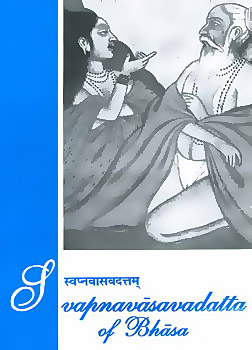 Drama during Gupta period was mainly confined to romantic comedies. Tragic stories were avoided because the main purpose of the theatre was to entertain the audience. The themes of some of the plays were taken from the epics like Mahabharata and Ramayana. Sanskrit drama flourished during the Gupta era. None of the dramatists wrote deep tragedies being at that time as they never wanted audiences to mentally stress their mind.
Drama during Gupta period was mainly confined to romantic comedies. Tragic stories were avoided because the main purpose of the theatre was to entertain the audience. The themes of some of the plays were taken from the epics like Mahabharata and Ramayana. Sanskrit drama flourished during the Gupta era. None of the dramatists wrote deep tragedies being at that time as they never wanted audiences to mentally stress their mind.
Bhasa most probably flourished in the second or third century A.D. Thirteen plays are attributed to him. The plots of two of these plays have been derived from the Ramayana. Six of them are based on the Mahabharata. Four of them are based on current story literature. Svapnavasavadatta is the best among the thirteen plays of Bhasa. His plot construction is crude and certain incidents are repeated. His style is simple and direct. No usage of long compounds and frequent embellishments. At times he violates the rules of the Natyashastra. His other dramas are Panchratra, Dutavakya, Pratima-nataka and Abhisheka-nataka.
Sudraka is the author of the famous drama, the Mricchakatika. It is a unique work in Sanskrit dramatic literature. He flourished in the earlier part of the fourth century A.D. He may be considered as the first Sanskrit dramatist of the Gupta period. The author has exhibited a surprising sense of fact, which completely dominates reason or imagination in the play. Action and characters are portrayed directly from life in this drama.
The Mudraraksasa by Visakhadatta presents a true and surprising living picture of an ancient Indian court along with all its political suspicions and intrigues. Kalidasa represents the high watermark of India`s creative genius as in epic, lyrical poetry and also in drama. Of the three plays of Kalidasa, the Malavikagnimitra is an immature work. The Vikramorvasiya shows a great advance in Kalidasa`s poetic and dramatic art. The theme of love reaches its highest consummation in Kalidasa`s third play, the Abhijnanasakuntalam. Here he treats love as a factor in the scheme of larger life instead of an isolated individual passion. He shows his great dramatic genius in the regular development of the plot. Imagination dominates over sense of fact and reason.
Bhartrhari in the era of 600-650 A.D. had composed the Sringarasataka. It contains general observations on love and women, life of virtue and wisdom and life of renunciation.



















